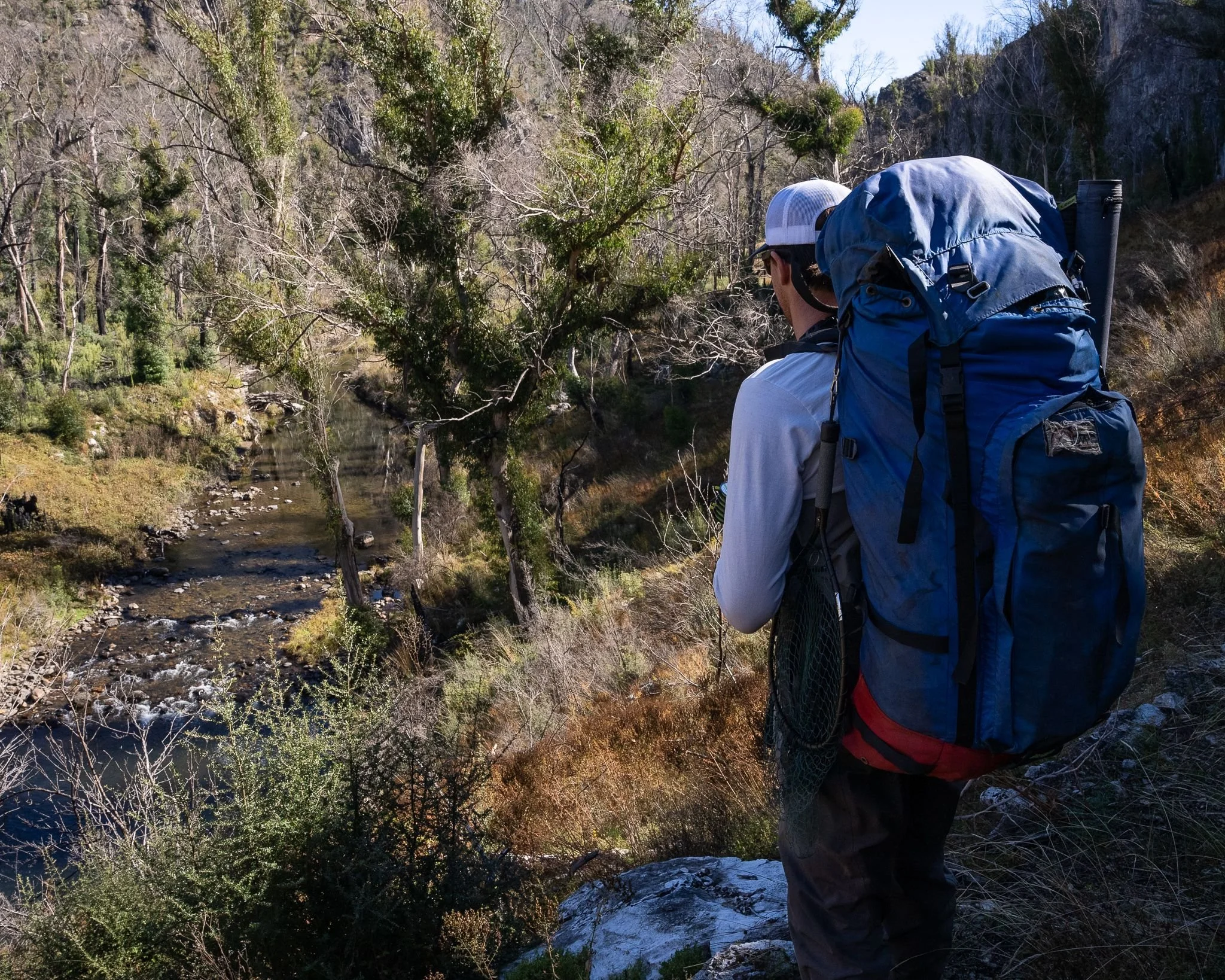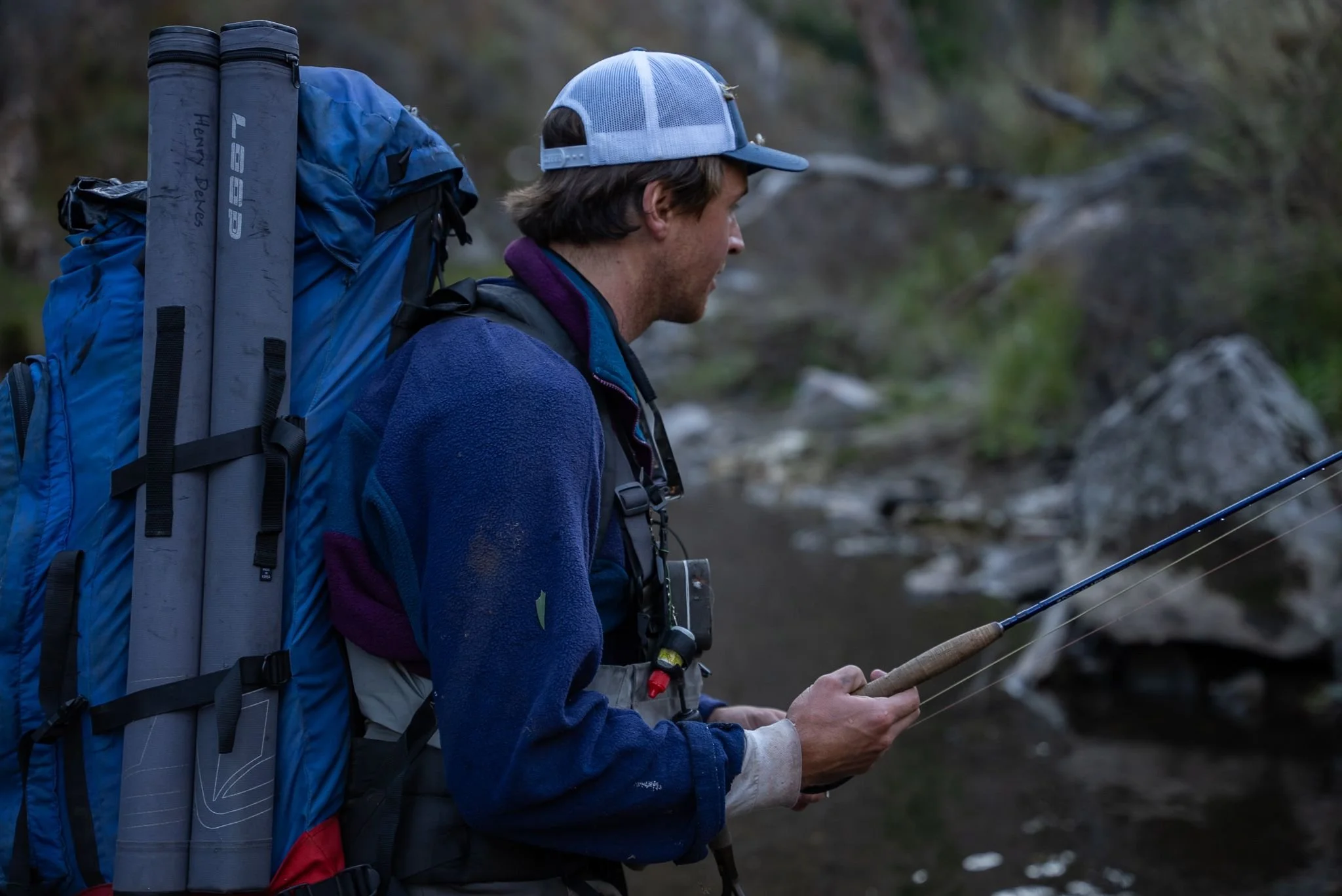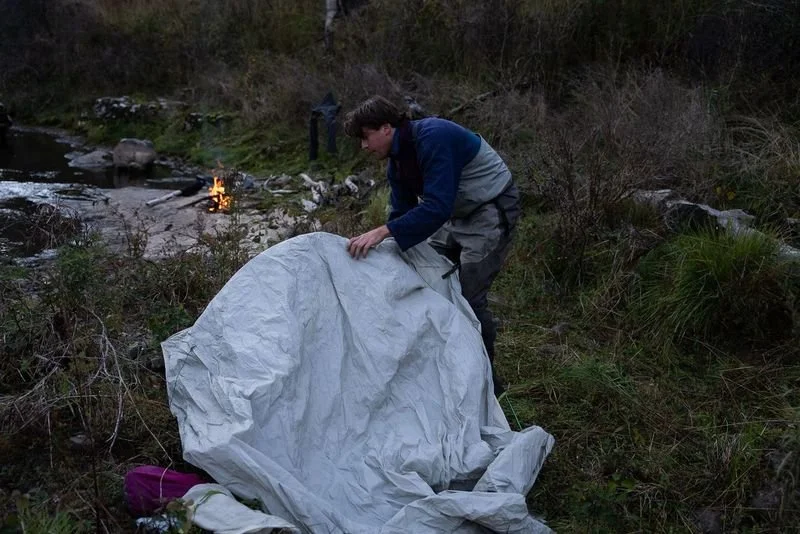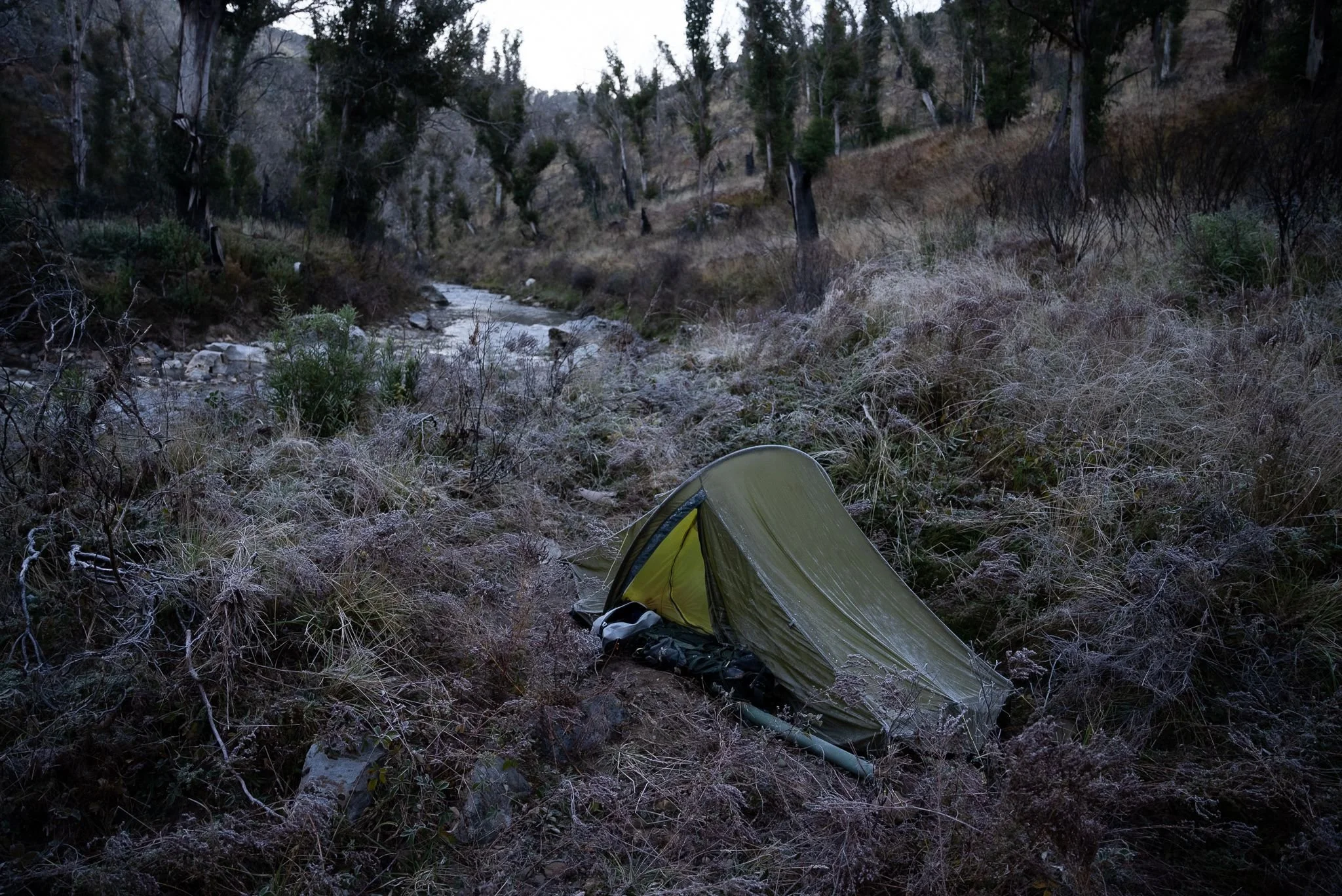What to pack when fly fishing
Long before the hardened lessons of being fastidious in preparing for an adventure, a young, foolish fly angler would tramp the backcountry of the Snowy Mountains without a care or thought to the consequences. This negligence resulted in many occasions in which that fool found himself without certain pieces of fishing gear, and more importantly, camping or safety gear. Unfortunately this fool was me. Fortunately, my negligence never resulted in any sort of life threatening situation. Merely a very uncomfortably cold night spent in the Yarrangobilly River valley without a sleeping mat and short a jumper or two. It was here in which I woke up* and declared to my fishing companions, Henry and Andrew, that I had learnt my lesson and I would never again pack a bag without ticking off ‘the list’. What makes matters worse, as the day progressed the fishing was spectacular, with the trout particularly keen on streamers. To be down my streamer box, and continually pestering my mates for a supply of Mini Sex Dungeons left me pretty sheepish.
Now I resort to pen and notepad to add a layer of verification to my packing regime. Not only has it left me uncharacteristically prepared compared to my earlier days of backcountry missions, I have actually learnt to love the packing process. It’s exciting. Getting that first taste of the impending trip through the packing process extends the experience. A mass collation of gear followed by strategic rationalisation culminates in a considered, Tetris like organisation that leaves even the most meticulous perfectionist satisified. The previous shortcomings in attention to detail are mitigated, plus the trip experience is rounded out with a bonus element of preparation.
*not sure it’s possible to wake up when you don’t actually ever get to sleep…
Have a rip through Tale Out’s holy trinity of fly fishing and camping gear. Notwithstanding the usual safety and wellbeing disclaimers, this list can handle most scenarios the backcountry throws at you.
Fly Fishing Gear:
Fly Rod: Choose a versatile rod appropriate for the target species and water conditions (e.g. 4-6 weight for trout).
Fly Reel and line: Match the reel to your rod's weight capacity and ensure it has a smooth drag system.
Leader and Tippet Material: Pack various sizes (e.g., 3X to 6X) for different fly patterns and fish species.
Flies: A selection of dry flies, nymphs, and streamers based on local insect hatches and fish preferences.
Fly Box: Keep your flies organised and accessible.
Fly Fishing Vest or Pack: For carrying your gear and accessories. It helps for these to be close at hand throughout the day.
Nippers and Forceps: For cutting and handling leader/tippet, and efficiently removing hooks with care.
Floatant and Sinkant: To keep your flies buoyant or sink them when needed.
Fly Fishing Net: Choose a net with a rubberized or knotless mesh to minimise fish harm.
Wading Boots: A shoe that can be walked comfortably on land and in the water. Best to ensure they provide good traction and fit comfortably with your waders.
Waders: Breathable or neoprene, depending on the season and location. Wet wading is often a good option too, but appropriate clothes need to be included for post-fishing.
Wading Belt: For safety and comfort while wading.
Polarised Sunglasses: Protect your eyes and improve visibility in the water.
Hat: A wide-brimmed hat for sun protection.
Gloves: For cold weather or sun protection.
Waterproof Bag or Dry Bag: To protect your valuables from water damage.
Backcountry essentials
First Aid Kit: Essential for emergencies. In Australia, it should certainly include snake bandages. Be sure to know how to use these also.
Insect Repellent: Protect yourself from mosquitoes and other insects.
Sunscreen: Apply sunscreen generously to prevent sunburn.
Multi-tool or Pocket Knife: For various purposes.
Camping and Shelter Gear: Don’t forget the tent…
Tent: Lightweight and suitable for backcountry camping.
Sleeping Bag: Choose a sleeping bag rated for the expected temperatures.
Sleeping Pad: Insulates you from the ground for added comfort and warmth.
Backpack: May be obvious, but something has to team up with your shoulders and carry your camping gear and essentials.
Cooking Gear: Including a portable stove, cookware, and utensils.
Food and Water: Plan for lightweight, non-perishable meals and a water purification system (including purification tablets).
Navigation Tools: Maps, compass, and GPS device or location beacon
Headlamp or Flashlight: With spare batteries.
Clothing: Layered clothing suitable for varying weather conditions.
Backcountry Permit: Check local regulations and obtain any necessary permits.
Fishing Accessories:
Fishing Licence: Ensure you have the required fishing permits for the area.
Fishing Tools: Pliers, hook remover, and a fish gripper.
Spare Reel Spools: Loaded with different lines for versatility.
Camera: Capture memories of your experience.
Safety and Emergency Gear
Snake bandages: An absolute must have for Australia. Enjoy the lightened load when in New Zealand (both in terms of weight on your back and on your mind).
Trowel: For back-country back-door activities…
Communication Device: Satellite phone or two-way radio in case of emergencies.
Emergency Whistle: To signal for help if needed.
First Aid Kit: Stocked with essentials for injuries and illnesses.
Fire-starting Kit: Waterproof matches or a firestarter.
Emergency Shelter: A lightweight tarp or bivy for unexpected situations.
The fun extras:
Brew: Some ground coffee and decanted ‘good stuff’ always seems to defy the principles of packing light and find their way into the pack.
Furniture: The lightweight camp chairs really are just that these days. Planting your rear above ground and kicking your feet back after a massive day on the water is a very good feeling. Settle for something above a ‘comfortable’ looking rock.
Snacks: I am a potato chip fiend. If the packet doesn't survive the car trip down it’s unlikely to last the walk in…
This is all to say, each to their own. The fact no one angler fishes the same extends to the gear they carry. As long as you have the absolute safety and wellbeing driven essentials (e.g. required clothing: dry thermals, dry fleece, waterproof jacket) you can follow your nose. For example, I like to split my fishing gear out into a C&F chest pack, with food, first aid, water and excess clothing relegated to the daypack, whereas Andrew likes to consolidate it all to the back and have the fishing gear on his waist strap of the pack. An additional tip is pending which hand you cast, stow your rod tube on the other side, minimise the chance of it getting in the way of your casting action.
Disclaimer:
This is what those at Tale Out take on a trip.It has served us really well and accounts for most conditions in the places we fish. It probably needs to be tailored to location specific weather conditions, dangers/threats, and fishing conditions. Hope it helps and is interesting.












